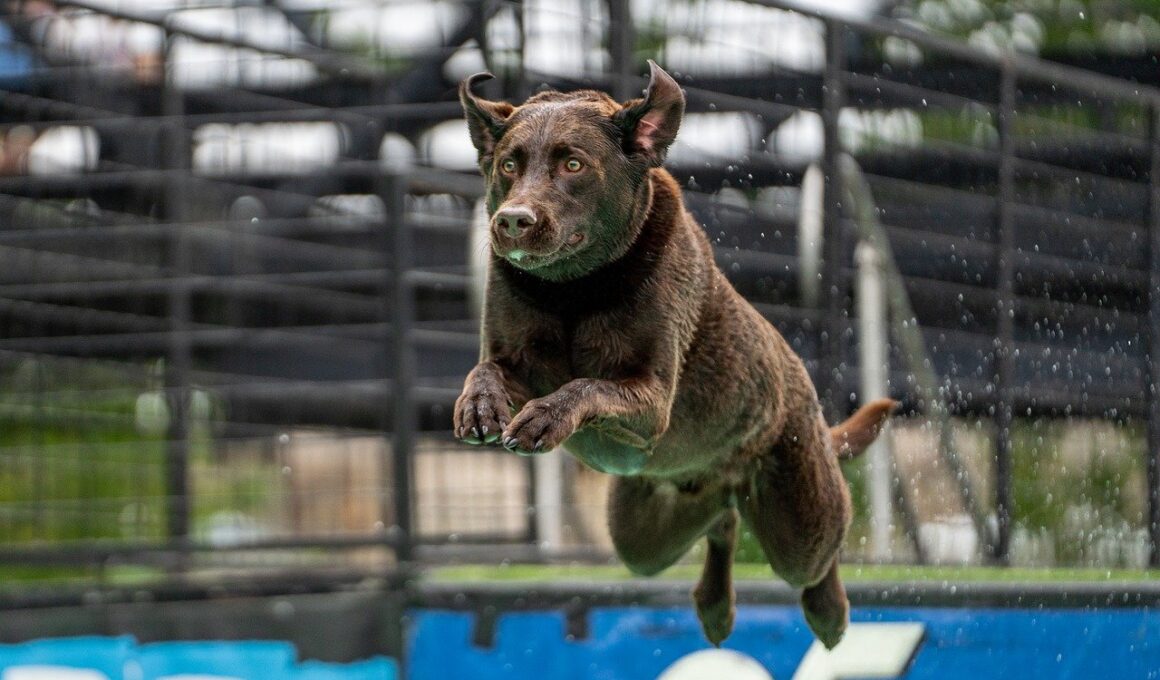Trademark and Branding Issues in Dog Show Events
Dog shows are vibrant events where breeds and handlers come together to exhibit their dogs’ characteristics and beauty. However, these events often face significant trademark and branding challenges that can impact their operation. Ensuring compliance with trademark laws is essential for organizers, exhibitors, and sponsors. Notably, creating an event name that reflects the values of the show while avoiding existing trademarks is vital. Awareness of both federal and state laws governing trademarks helps prevent potential legal repercussions that could arise from misuse. All stakeholders should also be cognizant of any specific breed club regulations that may dictate the branding process. In some instances, clubs might hold exclusive rights to certain terms and branding symbols related to their breeds. Failure to comply with such regulations can lead to disputes, and sometimes event disqualification. Conversely, well-managed trademark strategies can enhance an event’s visibility and profitability. Branding can create lasting impressions and attract sponsors. Organizers should develop a solid understanding of the legal landscape to navigate these complexities efficiently, significantly benefiting upcoming dog shows and fostering a healthier competitive environment. In achieving compliance, they can prevent trademark infringement issues and avoid potentially costly litigation.
A fundamental aspect of organizing a successful dog show lies in the understanding of trademark registration processes. Trademark registration provides legal protection against unauthorized use of brand names and logos, thus adding value and legitimacy to the event. Each organizing committee should prioritize the registration of unique identifiers that encapsulate the essence of their brand. This process often involves comprehensive searches to ensure no conflicts arise with pre-existing marks that qualify as confusingly similar. Besides protecting brand identity, registered trademarks can significantly influence marketing strategies, helping distinguish the show from competitors. Organizers can integrate their trademarks into marketing efforts, from promotional signage to social media campaigns, enhancing overall brand recognition. A clear and strong brand can also incentivize more exhibitors to participate, knowing they are associating with a notorious event. Moreover, branding can attract sponsorships, providing financial benefits crucial for the event’s success. Event sponsors might be interested in promoting their products or services alongside reputable and established brands, thus increasing the profile of both the show and their offerings. It’s vital for stakeholders to continuously monitor any potential trademark infringements throughout the event lifecycle to effectively protect their brand integrity over time.
Understanding Intellectual Property Rights
Intellectual property rights play an integral role in the realm of dog shows, particularly focusing on how branding aligns within legal frameworks. These rights ensure that organizers, handlers, and breeders can protect their unique contributions to the industry while maintaining fair competition. Understanding copyright, trade dress, and trademarks elevates overall awareness of legalities surrounding branding. For instance, if a specific logo or a unique color scheme is extensively associated with a dog show, establishing a trademark ensures exclusive usage rights. Additionally, the incorporation of promotional materials featuring these visuals should adhere to point-of-sale guidelines and advertisements. Not only do these regulations safeguard brand identity, but they also establish consumer trust and brand loyalty. Organizers may also opt to seek legal advice when faced with potential infringements. The challenge is to balance the need for robust branding while respecting other participants’ intellectual property, which could stem from creative designs, logos, or even the event’s name and theme. Understanding one’s rights and those of competitors fosters a collaborative spirit within the dog show community, promoting integrity among different players engaged in these events to ensure fairness.
Another vital component within dog show branding and compliance involves the careful selection of sponsorship partners. Engaging with brands that resonate well with the values of the event can create a symbiotic relationship beneficial for both parties. However, a thorough vetting process is necessary to ensure that sponsorships align with the event’s overall image. Potential sponsors must not have conflicting trademarks that could complicate event branding or lead to legal disputes. They also should uphold practices reflecting care, ethics, and the well-being of animals involved. Assigning clear branding guidelines is crucial to inform sponsors how to represent their affiliation with the show correctly. This encompasses logo placement on promotional materials, merchandise, and any advertising campaigns. Failure to communicate these guidelines can result in a dilution of the show’s brand or even reputational damage, negatively impacting sponsor relationships. Additionally, the branding initiative should be adaptable over time, allowing organizers to reconsider sponsorship structures, accommodating shifts in public perception, and aligning with contemporary issues affecting dogs and handlers. Ultimately, thoughtful sponsorship choices and collaborations can bolster brand loyalty among participants and spectators alike while ensuring compliance with relevant trademark laws.
Educating Participants on Compliance
Educating all participants about trademark compliance is essential for the smooth operation of dog show events. This education must extend to handlers, sponsors, and any staff involved in planning and execution. Ensuring everyone understands the importance of trademarks encourages respect for each other’s intellectual property and prevents potential conflicts. Organizers might consider hosting seminars or workshops during the event to inform participants regarding trademark law, fair usage, and branding best practices. Providing this background knowledge can empower exhibitors while fostering an appreciation for one another’s rights, reducing the likelihood of disputes. Materials regarding frequently asked questions about compliance should also be readily available for attendees. Empowered participants will better navigate branding, ensuring a respectful environment during dog shows while positioning themselves favorably in the marketplace. Transparency around these regulations can elevate the event and inspire active collaboration among handlers and trainers. Additionally, proactive measures regarding compliance can prevent situations where handlers inadvertently infringe upon trademarks, ensuring an overall respectful atmosphere while showcasing the diversity of breeds and talents present. Enhanced education ultimately fosters a vibrant dog show culture committed to preserving integrity and respect for all participants, bolstering the event’s reputation for years to come.
Understanding how branding influences annual dog show events can also guide future planning phases. Tracking branding effectiveness through feedback surveys and analysis of participant and spectator engagement will deliver insights necessary for informed decision-making. Consequently, event organizers should analyze the performance of their branding strategies annually. Determining how effective various branding elements resonate with attendees can highlight strengths and areas necessitating improvement. Understanding audience demographics can further refine marketing messaging, encouraging a strong attendance rate in subsequent years. Engaging effectively with participants via social media platforms helps cultivate an ongoing dialogue with stakeholders, promoting loyalty and excitement leading up to each show. This engagement should include success stories, highlighting achievements from past shows, paired with plans for future events, ensuring a legacy is built. Although complying with legal requirements remains paramount, blending strategic planning with innovative branding concepts can ensure every dog show remains competitive and relevant. Evaluating how changing public perceptions affect engagement can also inform decision-making, ensuring that events adapt according to modern expectations of professionalism and care for dog welfare. Thus, effective planning can ultimately contribute to growth, innovation, and success in the dog show domain.
Conclusion: The Importance of Compliance in Branding
In conclusion, the landscape of dog shows is rich with opportunities and challenges regarding trademark and branding issues. Navigating these complexities requires a strategic approach that prioritizes compliance while still fostering creativity and promoting unique brand identities. Stakeholders ranging from organizers to exhibitors must continuously educate themselves through workshops and resources that clarify trademark laws and branding ethics. Emphasis on effective sponsorship collaborations ensures public trust, while clearly established compliance guidelines maintain an equitable environment. The importance of intellectual property rights cannot be overstated, as they provide the backbone to a flourishing dog show community. As participants engage in friendly competition, understanding the value of each other’s contributions fosters appreciation and respect within the industry. Moreover, the ability to adapt branding strategies over time, coupled with ongoing analysis, ultimately positions dog shows as vital cultural events. Adopting a proactive stance toward compliance and branding solidifies each event’s reputation and attracts future participants and sponsors. By building a strong foundation in these areas, dog shows can continue thriving, ensuring they celebrate the majestic beauty and talents of dogs while resonating positively with audiences far and wide.
This is another paragraph with exactly 190 words…


